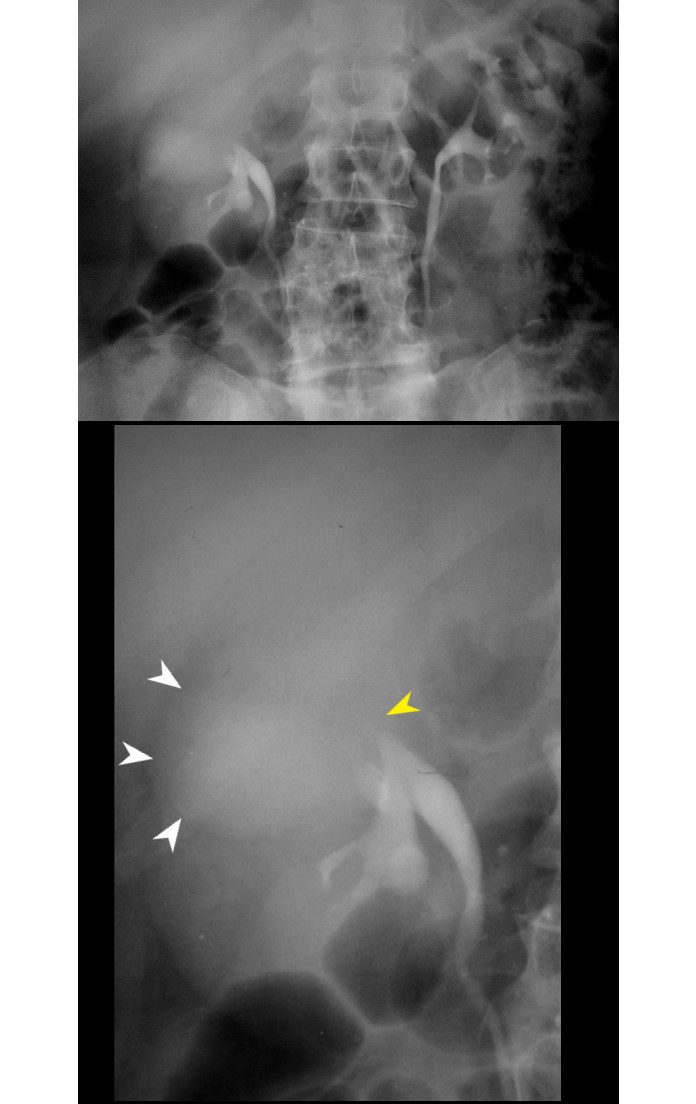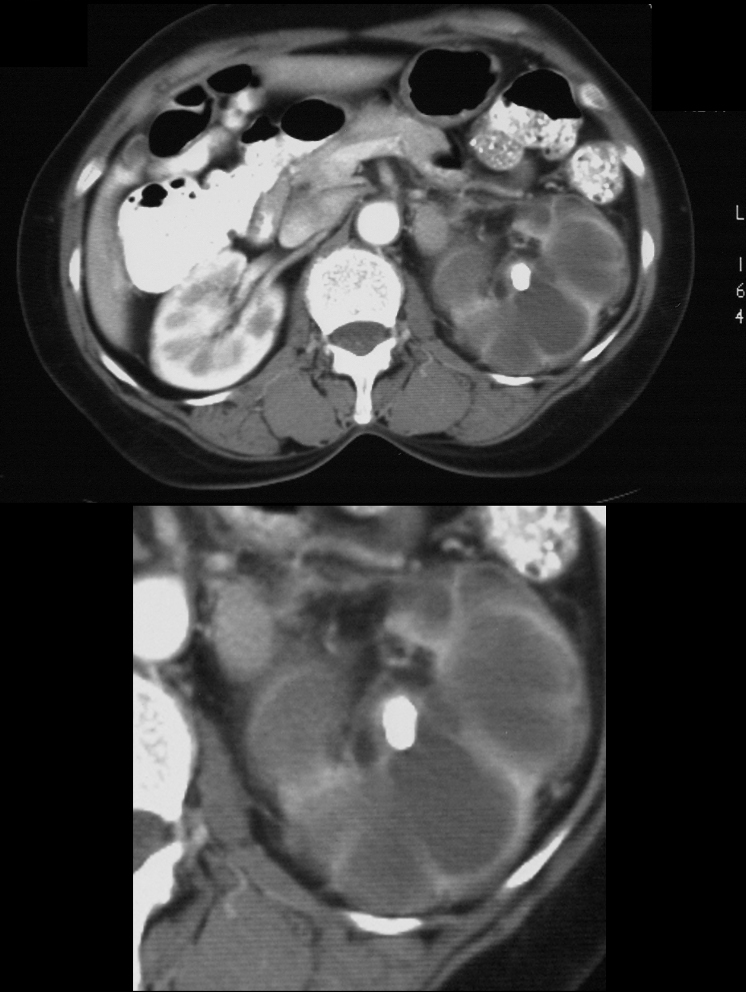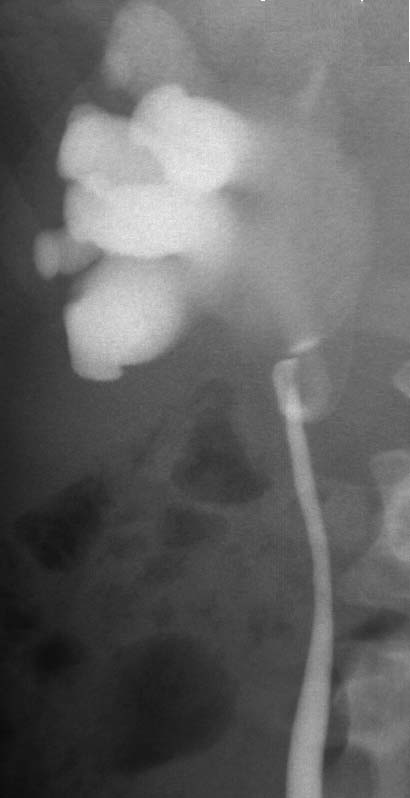
Axial CT in the excretory phase shows a thin crescent of contrast accumulation in a severely hydronephrotic left kidney. The characteristic shape results from the rounded shape of the dependent portion of the calyx
Ashley Davidoff MD TheCommonVein.net 125211
Delayed Excretory phase from an intravenous pyelogram shows downward displacement of the lower pole calyces by a dilated obstructed upper pole collecting system. This patient had TB of the kidney with infundibular stenosis of the mid pole calyces which are starting to fill in with contrast (white arrowheads) with secondary obstruction of the upper pole calyces (yellow arrowhead). The result is to cause downward displacement of the non-obstructed lower pole calyces. This is an uncommon cause of the drooping lily sign. Duplication of the collecting system with obstruction of the upper pole moiety and secondary downward displacement of the lower pole moiety is the more common cause
Ashley Davidoff MD TheCommonVein.net 115866 L
63-year-old female with a history of nephrolithiasis and chronic obstruction and a diagnosis of Xanthogranulomatous pyelonephritis (XGP).
Axial CT through the middle of the kidneys shows multiple, low attenuation obstructed calyces, surrounded by enhancing thin renal parenchyma. The appearance is reminiscent of the toe pads on a polar bear’s paw. The patient did have a history of TB
Ashley Davidoff MD TheCommonVein.net 24526
Retrograde pyelogram of the right kidney shows a ?balloon on a string sign?, characteristic of a congenital uretero-pelvic junction (UPJ) narrowing The balloons represent the upstream dilation of the calyces and pelvis, and the string represents the downstream non-dilated ureter.
Ashley Davidoff MD TheCommonVein.net 131235
